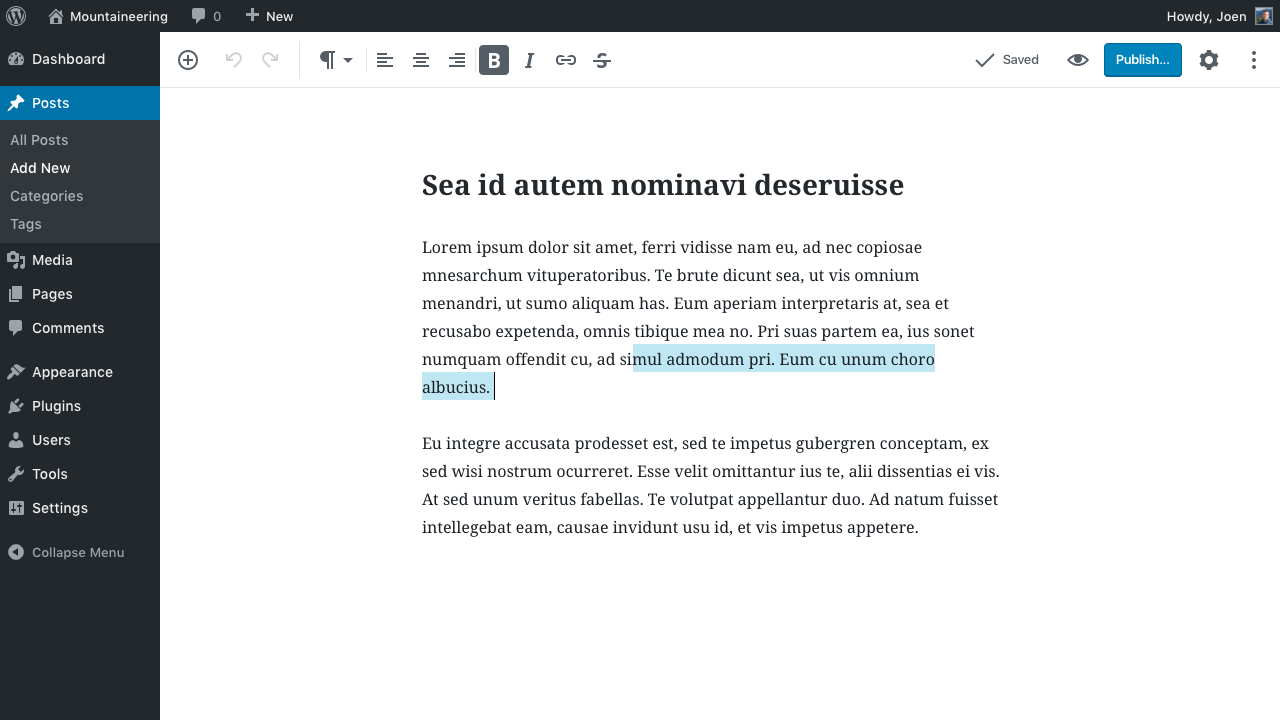Printing since 1440.
This is the development hub for the editor focus in core. Gutenberg is the project name. If you want to use the latest release with your WordPress, download Gutenberg from the WordPress.org plugins repository. Conversations and discussions take place in #core-editor on the core WordPress Slack.
Discover more about the project here.
Gutenberg is more than an editor. While the editor is the focus right now, the project will ultimately impact the entire publishing experience including customization (the next focus area).
The editor will create a new page- and post-building experience that makes writing rich posts effortless, and has “blocks” to make it easy what today might take shortcodes, custom HTML, or “mystery meat” embed discovery. — Matt Mullenweg
One thing that sets WordPress apart from other systems is that it allows you to create as rich a post layout as you can imagine -- but only if you know HTML and CSS and build your own custom theme. By thinking of the editor as a tool to let you write rich posts and create beautiful layouts, we can transform WordPress into something users love, as opposed something they pick it because it's what everyone else uses.
Gutenberg looks at the editor as more than a content field, revisiting a layout that has been largely unchanged for almost a decade. This allows us to holistically design a modern editing experience and build a foundation for things to come.
Here's why we're looking at the whole editing screen, as opposed to just the content field:
- The block unifies multiple interfaces. If we add that on top of the existing interface, it would add complexity, as opposed to removing it.
- By revisiting the interface, we can modernize the writing, editing, and publishing experience, with usability and simplicity in mind, benefitting both new and casual users.
- When singular block interface takes center stage, it demonstrates a clear path forward for developers to create premium blocks, superior to both shortcodes and widgets.
- Considering the whole interface lays a solid foundation for the next focus, full site customization.
- Looking at the full editor screen also gives us the opportunity to drastically modernize the foundation, and take steps towards a more fluid and JavaScript-powered future that fully leverages the WordPress REST API.
Blocks are the unifying evolution of what is now covered, in different ways, by shortcodes, embeds, widgets, post formats, custom post types, theme options, meta-boxes, and other formatting elements. They embrace the breadth of functionality WordPress is capable of, with the clarity of a consistent user experience.
Imagine a custom “employee” block that a client can drag to an About page to automatically display a picture, name, and bio. A whole universe of plugins that all extend WordPress in the same way. Simplified menus and widgets. Users who can instantly understand and use WordPress -- and 90% of plugins. This will allow you to easily compose beautiful posts like this example.
Check out the FAQ for answers to the most common questions about the project.
Posts are backwards compatible, and shortcodes will still work. We are continuously exploring how highly-tailored meta boxes can be accommodated, and are looking at solutions ranging from a plugin to disable Gutenberg to automatically detecting whether to load Gutenberg or not. While we want to make sure the new editing experience from writing to publishing is user-friendly, we’re committed to finding a good solution for highly-tailored existing sites.
Gutenberg has three planned stages. The first, aimed for inclusion in WordPress 5.0, focuses on the post editing experience and the implementation of blocks. This initial phase focuses on a content-first approach. The use of blocks, as detailed above, allows you to focus on how your content will look without the distraction of other configuration options. This ultimately will help all users present their content in a way that is engaging, direct, and visual.
These foundational elements will pave the way for stages two and three, planned for the next year, to go beyond the post into page templates and ultimately, full site customization.
Gutenberg is a big change, and there will be ways to ensure that existing functionality (like shortcodes and meta-boxes) continue to work while allowing developers the time and paths to transition effectively. Ultimately, it will open new opportunities for plugin and theme developers to better serve users through a more engaging and visual experience that takes advantage of a toolset supported by core.
We’re calling this editor project "Gutenberg" because it's a big undertaking. We are working on it every day in GitHub, and we'd love your help building it. You’re also welcome to give feedback, the easiest is to join us in our Slack channel, #core-editor.
Gutenberg is built by many contributors and volunteers. Please see the full list in CONTRIBUTORS.md.
Please see CONTRIBUTING.md.
- Gutenberg, or the Ship of Theseus, with examples of what Gutenberg might do in the future
- Editor Technical Overview
- Design Principles and block design best practices
- WP Post Grammar Parser
- Development updates on make.wordpress.org
- Documentation: Creating Blocks, Reference, and Guidelines




